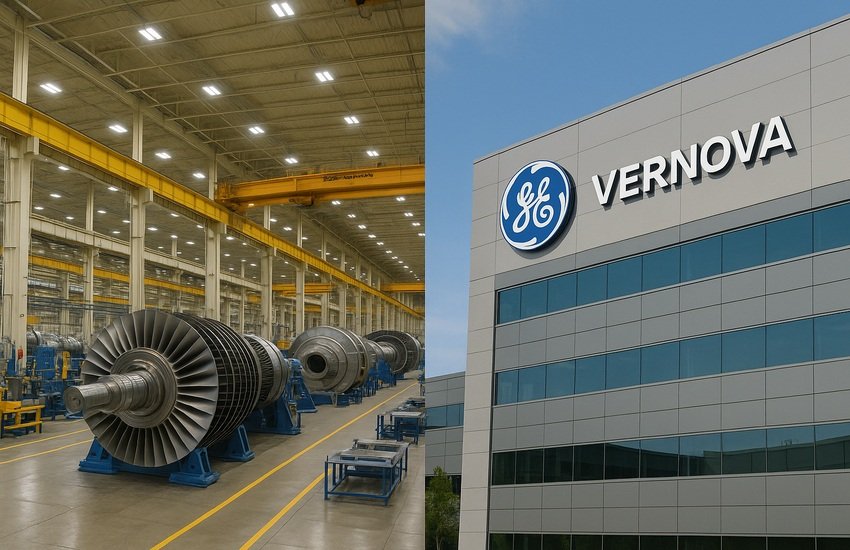The race toward quantum advantage is entering its most critical phase, and IBM has quietly positioned itself as the frontrunner in a highly competitive field dominated by tech giants like Google, Microsoft, and Amazon. In its Q2 2025 earnings call, IBM confirmed a major milestone: the deployment of IBM Quantum System Two in Japan, the first such system outside the United States. This isn’t just a milestone in hardware—it signals IBM’s intent to establish global leadership in quantum computing infrastructure. With fault-tolerant quantum computing still considered the “holy grail,” IBM has laid out a strategic roadmap targeting this breakthrough by 2029. As enterprise use cases multiply and quantum hardware and software stacks converge, IBM is aligning its innovation, partnerships, and execution to capture a first-mover advantage in a multi-billion-dollar future market. But with rising capital costs, intensifying competition, and valuation headwinds, the road to quantum supremacy is anything but guaranteed.
Quantum Leadership
IBM’s recent deployment of its Quantum System Two in Japan, in collaboration with the RIKEN Institute, serves as a testament to its global ambition and strategic leadership in quantum computing. This system, IBM’s most advanced to date, symbolizes not only the company’s technological prowess but also its ability to secure government and academic collaborations in key international markets. The deployment reinforces IBM’s belief that quantum computing is not just a research initiative but a commercial imperative. The company is increasingly leaning into its decades-long R&D investments, combining proprietary quantum hardware with advanced control electronics, cryogenics, and software platforms. By integrating quantum into its broader enterprise stack—including watsonx, Red Hat OpenShift, and z17 infrastructure—IBM is crafting a vertically integrated play. Unlike rivals focusing on point solutions or public cloud-based quantum experiments, IBM’s hybrid architecture allows enterprise clients to experiment, develop, and deploy quantum applications in controlled, secure environments. Its strategy leverages quantum computing as an extension of its core mission-critical IT systems, a key differentiator from cloud-native competitors. IBM’s use of client zero initiatives to scale its own quantum capabilities internally before external rollout further sets it apart. While Google’s Sycamore and Microsoft’s topological qubit theories garner media attention, IBM’s approach is grounded in execution, regulatory readiness, and practical use-case deployment. The Q2 2025 call also highlighted IBM’s resilience in navigating geopolitical uncertainties, regulatory frameworks, and constrained public sector spending—factors that could slow competitors. With over 70 workflows already powered by AI and automation tools developed in-house, IBM is setting the groundwork for integrating quantum into its enterprise AI and hybrid cloud solutions, creating a feedback loop of innovation, deployment, and scale.
Technology Roadmap
IBM’s target of achieving fault-tolerant quantum computing by 2029 reflects both ambition and strategic clarity. The roadmap is centered around a multi-layered stack: superconducting qubits for hardware, Qiskit for quantum software development, and middleware orchestration via watsonx and OpenShift. This layered strategy allows IBM to create synergies between its existing enterprise software and emerging quantum capabilities. Importantly, IBM is not merely chasing qubit count but focusing on quantum volume—a measure of computational power and reliability. In parallel, the company is developing error-correction protocols critical to realizing fault tolerance. IBM’s recent announcement of the Spyre Accelerator, set to become available in Q4 2025, is a pivotal step. It will allow watsonx Code Assistant for Z and watsonx Assistant for Z to run natively on z17, effectively bringing quantum-ready AI applications into existing enterprise IT environments. IBM also launched Power11, advancing mission-critical workloads across hybrid environments, and tying that directly into its quantum narrative. By continuously upgrading core infrastructure like z17 and Power11 with AI and automation capabilities, IBM ensures the enterprise is quantum-ready even before the hardware is. This holistic integration provides IBM with a first-mover’s edge in building scalable, resilient, and AI-enhanced quantum systems. While rivals like Google chase theoretical quantum supremacy with high-risk, high-reward moonshots, IBM is building incrementally and pragmatically. The real test, however, will be in scaling its innovations beyond labs into revenue-generating, fault-tolerant solutions—a gap that no company has yet bridged. IBM’s technological roadmap is credible but contingent on achieving major breakthroughs in quantum error correction, coherence time, and hardware scalability—all within a finite time horizon.
Strategic Partnerships & Ecosystem
IBM’s push toward quantum advantage is not happening in isolation. The company has aggressively expanded its global ecosystem to support the commercialization and scalability of its quantum strategy. Strategic collaborations with Oracle, Box, AWS, Salesforce, Microsoft, EY, and WPP highlight IBM’s ecosystem-first approach, embedding watsonx AI and eventually quantum tools into enterprise workflows. This strategy ensures that quantum computing, once viable, is not an experimental add-on but a core enabler of mission-critical business functions. IBM’s partnership with RIKEN in Japan to deploy Quantum System Two is particularly instructive—it demonstrates the company’s commitment to regional customization and regulatory alignment, which is crucial for government-led and academic quantum adoption. On the software front, IBM’s embrace of open-source standards via Qiskit allows it to nurture a community of quantum developers, accelerating innovation and developer engagement without the lock-in concerns associated with competitors’ proprietary tools. Its recent acquisition of HashiCorp further adds infrastructure-as-code capabilities, enabling more automated and scalable deployment of quantum environments across hybrid architectures. Additionally, IBM’s client zero strategy—internally stress-testing quantum, AI, and hybrid cloud tools—provides a feedback loop for real-world validation before mass deployment. This approach minimizes go-to-market risk and enhances IBM’s credibility with enterprise clients who prioritize stability and regulatory compliance. With the GenAI book of business surpassing $7.5 billion and growing demand for hybrid cloud-AI integration, IBM is creating a fertile ground for quantum tools to piggyback on its existing commercial relationships. However, the success of this ecosystem hinges on sustained engagement, economic incentives for partners, and demonstrable client ROI—challenges that become magnified when dealing with a nascent and complex field like quantum computing.
Execution & Timeline Risk
IBM’s commitment to delivering fault-tolerant quantum computing by 2029 is ambitious and reflects long-term vision, but the execution risks are significant. Quantum computing remains a frontier technology with unresolved challenges, including qubit decoherence, error correction, and scalable hardware manufacturing. IBM’s credibility in execution stems from its consistent innovation cycle and its ability to commercialize new technology within its core enterprise base. However, even with the Quantum System Two deployment and roadmap clarity, the 2029 target carries inherent scientific, engineering, and commercial risks. Delays in quantum hardware development, talent acquisition, and regulatory compliance could impact the company’s ability to deliver. On the operational side, IBM has shown strength—free cash flow hit $4.8 billion in H1 2025, and the company raised its full-year FCF guidance to over $13.5 billion. The z17 launch, with 67% year-over-year growth, and mainframe MIPS capacity expansion point to robust foundational infrastructure. But quantum computing is unlike traditional IT—development costs are higher, scaling is nonlinear, and returns may be delayed. Execution also depends on the successful integration of recent acquisitions like HashiCorp and DataStax, which, while strategically sound, add organizational complexity. Internally, IBM’s AI-driven productivity initiatives have driven over $3.5 billion in annual run-rate savings, a flywheel it hopes to replicate in quantum deployment. However, the stakes are higher here. Any misalignment between quantum R&D timelines and enterprise readiness could lead to investment misfires. Moreover, IBM’s trailing valuation multiples—such as a 24.38x TEV/EBITDA and a 50.41x LTM P/E as of September 2025—suggest investor expectations are elevated. Any execution slippage could quickly compress these valuations, making precise delivery against roadmap milestones a non-negotiable.
Key Takeaways
IBM’s aggressive push toward quantum advantage reflects a calculated strategy grounded in platform integration, ecosystem expansion, and long-term enterprise relevance. Its unique positioning—spanning hardware, software, and consulting—gives it a holistic advantage over Big Tech peers pursuing isolated quantum initiatives. The deployment of IBM Quantum System Two in Japan, expansion of watsonx capabilities, and continued mainframe innovation provide tangible proof points of momentum. However, the road to fault-tolerant quantum computing is fraught with scientific, engineering, and commercial uncertainties. Valuation is a key risk factor: as of September 2025, IBM trades at 20.45x LTM TEV/EBITDA and 40.84x LTM P/E, multiples that imply high investor confidence in forward execution. While IBM’s diversified revenue base and AI-driven productivity provide downside protection, any delays in quantum milestones could result in meaningful multiple contraction. In a market increasingly driven by near-term results, IBM’s decade-long quantum vision must continuously deliver interim progress to sustain its leadership position.





